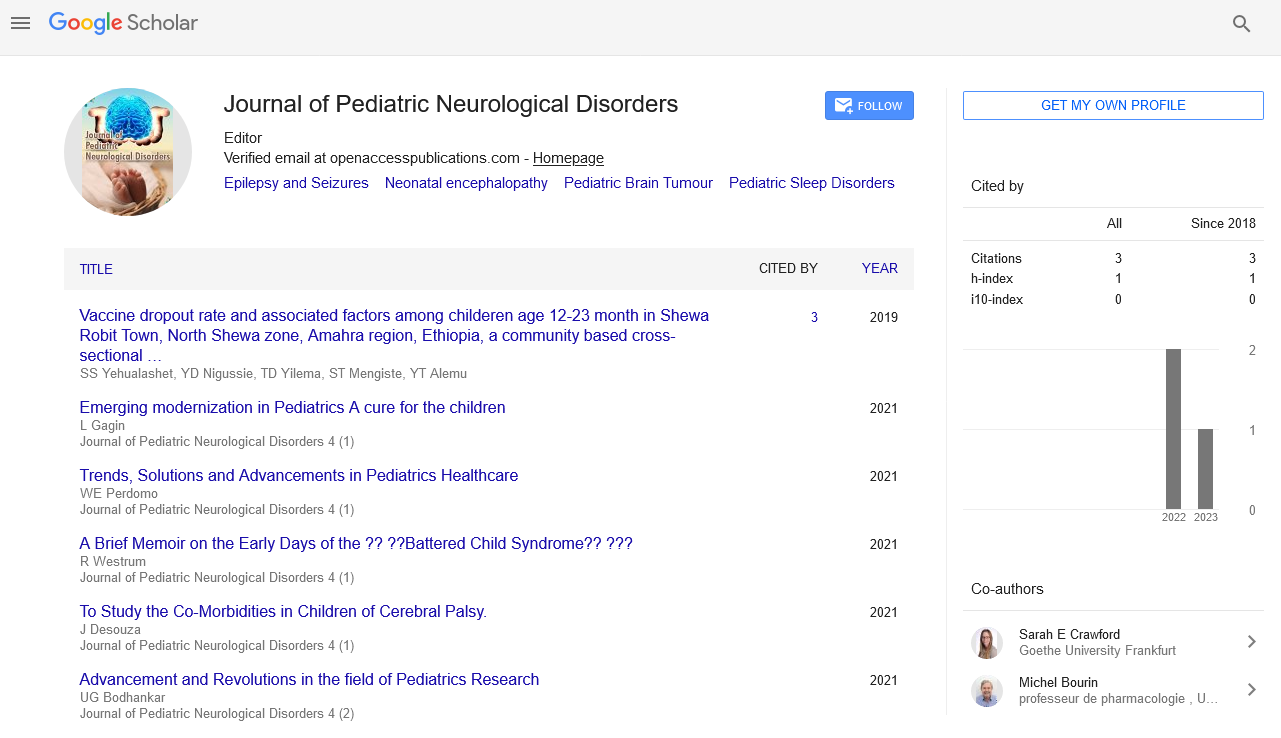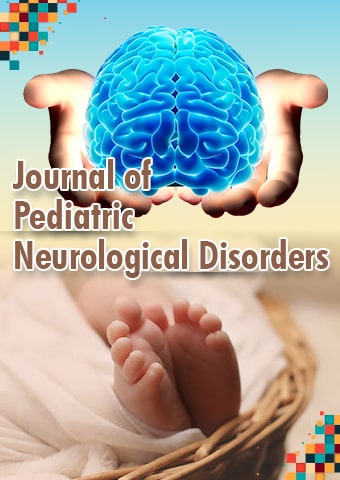Short Communication - Journal of Pediatric Neurological Disorders (2020) Volume 3, Issue 3
Interesting and rare case of goldenhar syndrome in a 3 years old male child
Gowhar Ahmad
The University of Jammu and Kashmir, India
Abstract
Goldenhar syndrome was first presented by an Austrian ophthalmologist. Maurice goldenhar who in the year 1850 described a syndrome complex characterised by presence of cong limbal dermiod with associated cong presence of preauricular skin tag or preauricular appendage sometimes presence of preauricular skin tag or preauricular appendage.
Sometimes presence of squint anophthalmos coloboma of upper lid iris retina. Astigmatism microphthalmos blepharophimosis syndrome may also be seen however it is very rare. Goldenhar syndrome is also termed as oculo auriculo vertebral syndrome or dysplasia and craniofacial syndrome or dysplasia 80% to 85% cases of GHS are normal from vision and mental facility point of view.
However it is only in 5% to 15% cases of GHS there are additional cong anomalies which are due to incomplete devolvement of first and second branchial arch due to defect in genes not inherited autosomal dominant and recessive or maternal gestational diabetes or exposure to influenza virus and rubella of history of haven taken drugs like
Thalidomide | Cocaine | Antibiotics | Retinoic acid
The additional cong anomalies are facial asymmetry: High arched palate Hare lip Cleft palate Defects in kidney like Double ureters Hydronephrosis Defects in limbs and spine Cong heart Underlying orbital involvement Dental anomalies Hearing defects CNS involvement 7th nerve Unilateral aplasia of trigeminal nuclei Trigeminal anaesthesia Impairment of memory intelligence and mental facility
So one has to do following investigations in the form of Ultrasound abdomen X-rays spine and limbs echo cardiogram by for cong heart MRI orbits to see for any underlying orbital involvement Dental examination for any dental anomalies
Complete ophthalmic examination ENT examination for any hearing defect EEG as far as scenario of limbal dermiod is concerned
Limbal dermiod is usually unilateral can be bilateral but rare incidence is 1 in 10 000 or can be 1 in 5 600 or 1 in 3500. They may involve entire cornea or may be only confined to conjunctiva male female ratio is 3 to 2. They are graded according to corneal involvement
Grade 1: It is involvement of corneal epithelium
Grade 2: It is involvement of destmets membrane of cornea
Grade 3: It is involvement of whole of ant segment
Few years back 3 years old male child was brought to me in my office with parents having noticed an inferotemporal palish white limbal lesion right eye, since birth with associated cong presence of a preauricular skin tag left ear this was chaterestic of GHS FT delivered child from non-cousin married couple.
No other associated cong anamolies | VA mydriatic refraction fundii were within normal limits. This child had grade-1 limbal dermiod normal mental facility. No other associated cong anomalies. | Needed only parenteral reassurance and observation.
However if the limbal dermiod approaches visual axis and threatens vision then surgery is the modality of choice which is both Visual and Cosmetic. Various surgical modalities are:
Lamellar keratoplasty | Auto-graft | Stem cell graft | Amniotic membrane graft | Smile lenticule tattooing and fibrin glue
In this procedure after excision of dermiod the resultant discolouration is corrected by tattooing and then a corneal lenticule is put in situ held in position by fibrin glue since no stitched are applied post-operative pain and astigmatism is less this is believed to be operation of choice.
Biography
Gowhar Ahmad is a Director in the Department of Ophthalmology, Florence Hospital, Multispecialty Centre, and India. He pursued his MBBS from University of Jammu and Kashmir and Master of Surgery in Ophthalmology, SN Medical College and University of Agra. He obtains a Fellowship in Paediatric Ophthalmology from Morefield’s Eye Hospital, London and Fellowship in Oculoplasty and Neurophthalmology from King Khaled Eye Specialist Hospital, Riyadh, Saudi Arabia. He had more than 40 years of experience in the field of Ophthalmology and served as guest national and international speaker. He has posted more than 700 ophthalmic articles on LinkedIn, and more than 800 on Docpleuxs. He is the key opinion leader on the Curofy having published more than 1600 posts. He has published many ophthalmic international papers and served as Editorial Member for International Journal of Science and Research. He attended the World Congress on Pediatrics and Clinical Pediatrics conference at Dubai, UAE on November 28th and 29th 2018 as a guest speaker. He is the Editorial Board Member for Clinical Pediatrics 2019 Congress which was held in June 2019, in Scotland. His research interest mainly focuses on Pediatric Ophthalmology, Oculoplasty, Neurophthalmology and Medical Ophthalmology. He is also interested in community ophthalmology and has conducted many eye camps in rural areas.

